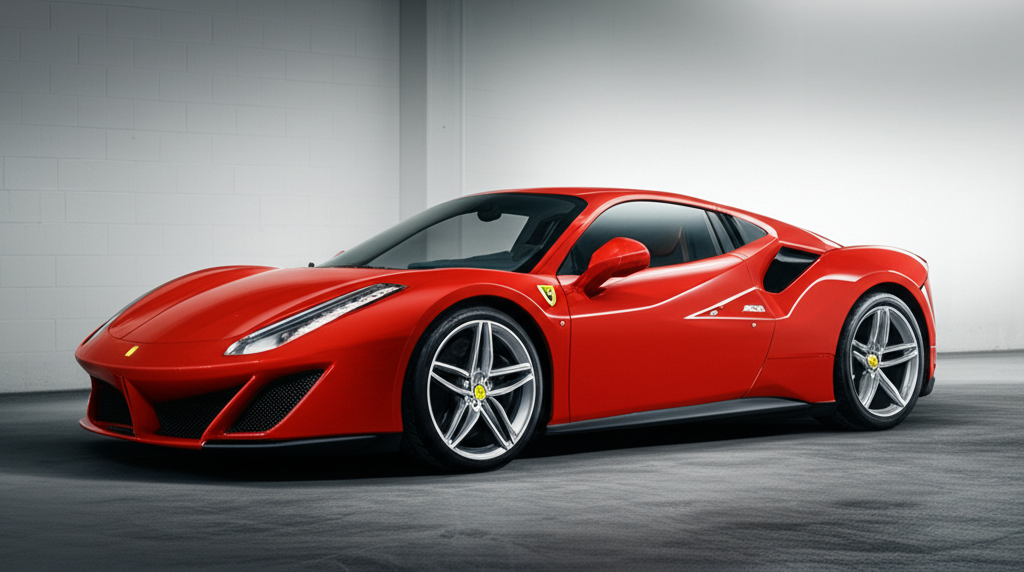Hamilton’s Ferrari Chapter: Unpacking the Scrutiny and Expectations
Amidst a challenging debut season, speculation mounts over Lewis Hamilton’s transition to Ferrari, with internal sentiment and performance metrics under the microscope.
Lewis Hamilton’s move to Scuderia Ferrari, a highly anticipated event in Formula 1, has been met with significant scrutiny. As the seven-time world champion navigates his inaugural season with the iconic Italian team, discussions surrounding his performance and reception within Ferrari have intensified. Reports suggest a critical internal view, with claims that a substantial portion of the team did not initially advocate for his signing. This narrative adds a layer of complexity to Hamilton’s ongoing adaptation, raising questions about team dynamics and the pressure associated with such a high-profile transfer.
A Blockbuster Move Under Pressure
Hamilton’s decision to leave Mercedes, the team with which he secured six of his world championships, for Ferrari was one of the most significant driver market moves in recent Formula 1 history. The move was widely seen as an attempt to chase a record-breaking eighth world title and to experience a new challenge with one of motorsport’s most storied franchises. However, the initial stages of his Ferrari tenure have not been without their difficulties. Hamilton himself has been candid in his self-assessment, offering critiques of his own performances during the early races of the 2024 season. This public introspection, while demonstrating accountability, also fuels external commentary on his adaptation process.
Internal Reception: “90% of Ferrari Didn’t Want You”
Central to the current discourse is a claim that “90% of Ferrari didn’t want you,” attributed to an unnamed source within the team. While the source’s anonymity and the precise methodology behind such a statistic remain unverified, the sentiment highlights potential internal divisions or differing opinions regarding the signing of a driver of Hamilton’s caliber. Such internal dynamics, whether rooted in existing team loyalties, strategic preferences, or financial considerations, can influence a driver’s integration and overall team morale. Without direct confirmation from Ferrari leadership or a broader consensus among team members, this specific percentage should be viewed as speculative commentary.
Performance Metrics and Team Integration
Hamilton’s performance in his debut Ferrari season is being closely tracked against expectations and the benchmark set by his teammate, Charles Leclerc. Early season results have shown a mixed picture, with both drivers experiencing challenges related to the car’s development and race pace. The complex process of integrating a new driver, particularly one with Hamilton’s extensive experience and demanding reputation, into an established team structure is often a lengthy one. This involves familiarizing with new engineering philosophies, operational procedures, and fostering collaborative relationships. The team’s success hinges on how effectively Hamilton and the existing Ferrari personnel can synchronize their efforts.
Understanding the Trade-offs
The recruitment of a driver like Lewis Hamilton represents a significant investment, not just financially but also in terms of team resources and strategic focus. On one hand, his unparalleled experience, race-winning pedigree, and technical feedback are assets that could propel Ferrari towards championship contention. His ability to extract performance from machinery and his understanding of championship-winning environments are invaluable. On the other hand, bringing in a driver of his stature can create unique challenges. Managing team dynamics, ensuring equal opportunity, and navigating the expectations of both the driver and the fanbase are crucial aspects that require careful management.
Looking Ahead: What to Expect
The narrative surrounding Lewis Hamilton at Ferrari is still in its early chapters. The team has a history of fostering strong driver partnerships, and the long-term success of this collaboration will depend on sustained effort from all parties. As the season progresses, closer observation of the car’s development, Hamilton’s feedback integration, and his on-track performance relative to his competitors and teammate will provide a clearer picture. Ferrari’s management will likely be focused on ensuring a cohesive environment that maximizes the potential of both drivers and the overall team. The strategic decisions made in the coming months regarding car upgrades and team direction will be critical in shaping the outcome of this highly anticipated partnership.
Key Takeaways
- Lewis Hamilton’s move to Ferrari is a high-profile transition facing significant scrutiny during his debut season.
- Reports of internal dissent regarding his signing, while unverified, highlight potential team dynamics.
- Hamilton’s public self-critique underscores the pressure and adaptation process involved.
- Team integration for a driver of Hamilton’s caliber involves complex technical and interpersonal adjustments.
- The long-term success of the partnership depends on ongoing team development and driver synergy.
Fans and analysts alike will continue to monitor Lewis Hamilton’s journey with Scuderia Ferrari as the 2024 Formula 1 season unfolds, with a keen eye on both his personal performance and the team’s collective progress.


























